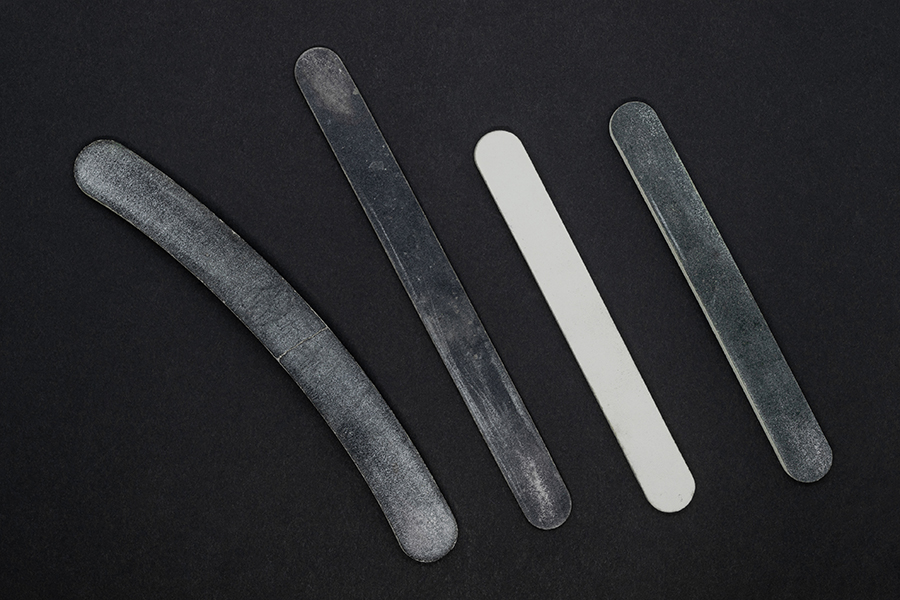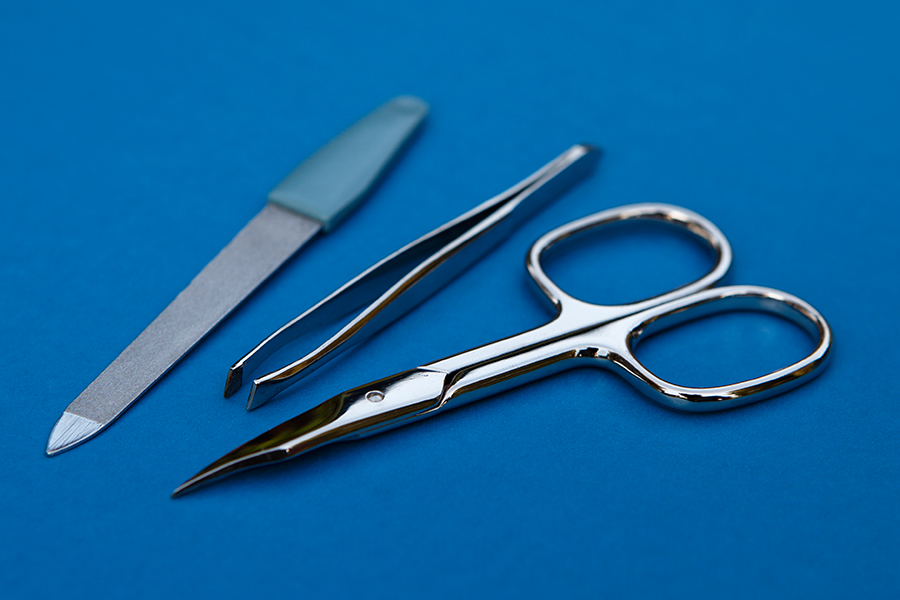The perfect tool for perfecting nails – nail files have been widely used for shaping nails. However, choosing the wrong nail files can lead to damage in nails such as breakage, uneven edges or weakened nails. There are certain criteria to ensure the right filers are used to make the filing process smooth and effective. Dr. Kavita Sheth, Founder, Kavi’s Nail Care & Institute of Nail Technology outlines the following factors to be considered while choosing the perfect nail file for efficient nail processes.
- Nail quality
- Desired shape
- Personal preference
Similarly, the Grit of the files are also important and crucial. Grit refers to the bumpy particles felt on the file when the fingers are run over it. Grit numbers refer to the smoothness or abrasiveness of the file. Higher number denotes that the file is smooth. If the number is on the lower side, it means the file is abrasive.
- Coarse grit is 150 for shaping (sometimes Dr. Kavita uses 100 grit for shaping)
- Lower grits (100-180) are best for acrylic or gel nails (extensions)
- Higher grits (240+) are gentler for natural nails
Material
- Glass files are durable and prevent splitting
- Metal files are too harsh for natural nails
- Emery boards offer versatility
Dr. Kavita prefers cushion files which can be sanitized.
Shapes
Shapes of the file play a role too.
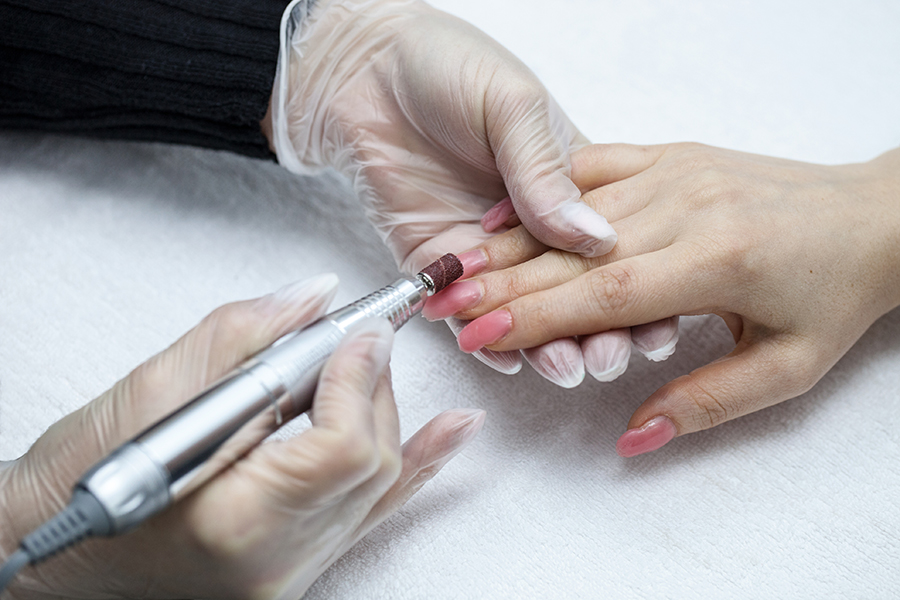
- Straight files are good for basic shaping
- Banana-shaped or diamond shaped ones provide better control.
“Always opt for high-quality, washable or sanitized and durable files to maintain hygiene and prevent nail damage,” adds Dr. Kavita.
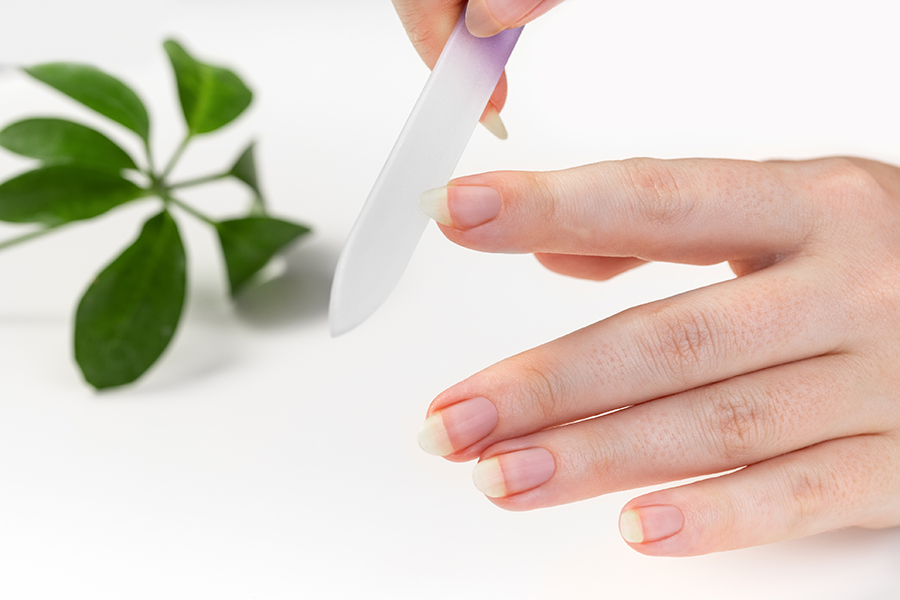
Best Practices
- To keep nails healthy and prevent breakage, always file in one direction instead of a back-and-forth motion, which can cause splitting.
- Use gentle strokes and AVOID OVER FILING which weakens the nail.
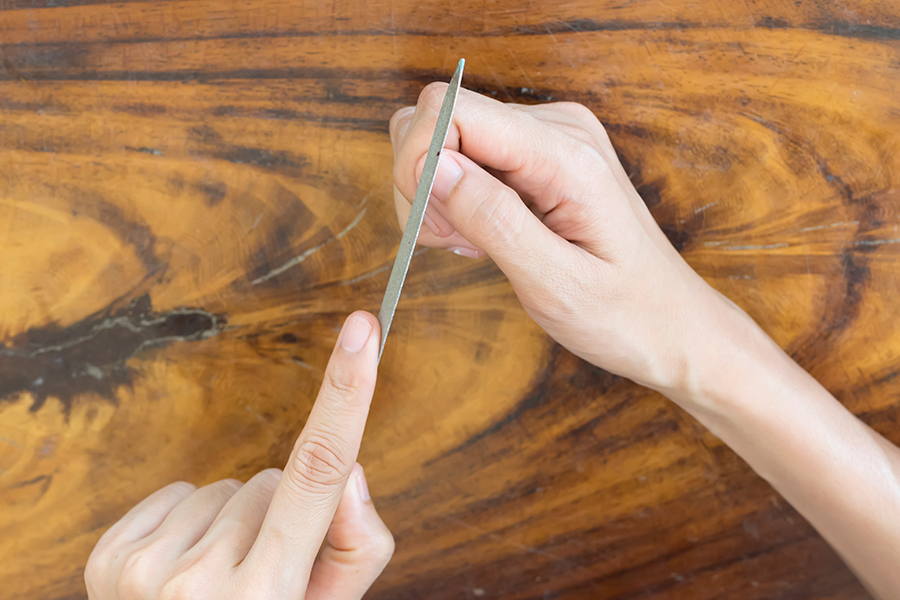
Dr. Kavita further highlights, “Start with a coarser grit for shaping and finish with a finer grit for smooth edges. For natural nails, use a 240-grit or higher to prevent thinning. Always clean your file after use, especially if it’s a reusable type. If using an electric nail file, apply light pressure and adjust speed based on nail thickness. Hydrate nails with cuticle oil post-filing to maintain nail health.”
Types of nail files and Uses
- Emery boards: Made of cardboard with different grit levels on each side, this is ideal for natural nails. Emery Boards can’t be sanitized
- Glass (crystal) files: Durable and gentle, this is perfect for sealing natural nails to prevent peeling
- Metal files: This can be used on natural nails just for shaping and on artificial nails. It is not ideal to use these files
- Electric nail files (e-files): This is used by professionals for acrylics, gels, and quick shaping
- Buffing blocks or buffers: These multi-sided tools smoothen ridges, enhance shine, and prep nails for polish
Do’s:
- File in one direction to prevent splitting
- Use the correct grit for your nail type
- Disinfect reusable files regularly
- Disposable files must be discarded.
Don’ts:
- Avoid using metal files on natural nails
- Don’t file wet nails — they become weak and prone to tearing
- Never file aggressively; or do over-filing. (This can thin the nail plate or sometimes lead to loss of nail plate too (if not done properly).
- Don’t share nail files to prevent infections.
How to use nail files efficiently
Dr. Kavita Sheth says, “For efficient filing, hold the file at a 45-degree angle and use long, gentle strokes in one direction. Start with a coarse grit (180-240) for shaping and a finer grit (240-400) for finishing. When using a buffer, use it sparingly to avoid over-thinning the nail. For extensions, use a 150-180 grit file for blending acrylics or gels and an e-file for precision. Always file nails before soaking or polishing, as wet nails are weaker. Lastly, keep your files clean to ensure hygiene and longevity, replacing them when they show signs of wear.”
The quality of the files play a very important role for best and efficient results. Cleaning of the files is key for ensuring it lasts longer. Salon professionals should use the perfect filing technique on client nails to prevent peeling, weak nails and breakage.
Keep the nail files clean and well maintained to increase their longevity. In case of any kind of contamination, replace it with immediate effect. No matter what, do not sanitize contaminated tools.
Work with tools to make life easy. The nail file ensures that the workflow is smooth. When the nail file makes you put a certain amount of force, replace it immediately. All these factors ensure that the clients’ nails are safe and damage free.
